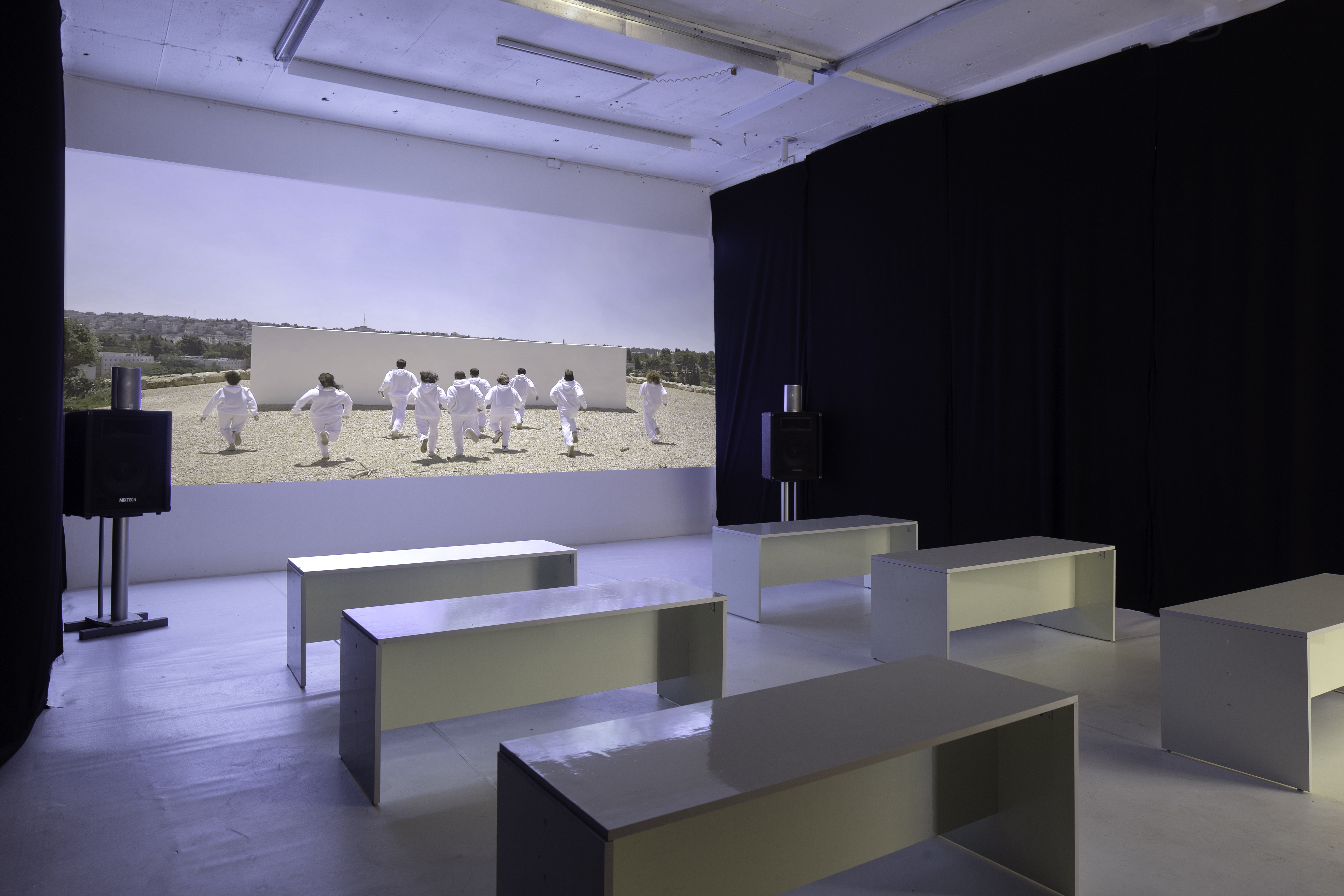An Other Day
2018
In 1918, Boris Schatz wrote his book, Rebuilt Jerusalem: A Daydream, in which he describes his utopian vision of a future Jerusalem a hundred years forward, in 2018.
full version: https://vimeo.com/381136406/703c18bdea
![]()
![]()
2018
16:11 min
In 1918, Boris Schatz wrote his book, Rebuilt Jerusalem: A Daydream, in which he describes his utopian vision of a future Jerusalem a hundred years forward, in 2018.
Schatz describes a city full of gardens, whose residents invest tremendous efforts in protecting the plants and foliage that envelope the city. The city, which runs entirely on solar energy, has futuristic cars and escalators instead of sidewalks. He describes a socialist-communist society – a city in which art, culture, and sport are at the center of life. In his visions, the Temple Mount has an art museum on it – replacing the al-Aqsa Mosque, and the desire to build the Third Temple. In another vision, children and teens live and are educated in a deifned area, in a way that is reminiscent of how children lived on the kibbutz until the Eighties. This area is called, in Schatz’s book, “The children’s paradise”.
“An Other Day” is a film that draws inspiration from Schatz’s visions and grants them visual characteristics that are taken from films and TV series. “An Other Day" tests the way in which the cinematic narrative has been built over the years, and tries to play around with it – whether by creating unnecessary tension or by avoiding moments of crisis, essential components of classic cinematic screenwriting.
Sometimes the story is unclear, and sometimes it’s even unnecessary for understanding the world presented in the film. “An Other Day” ofers a new option, utopian but sometimes also dystopian, of life in Jerusalem. A parallel and strange reality is created, rich in symbols – some deciphered, some less so – which create a diferent world in which we could have lived.
full version: https://vimeo.com/381136406/703c18bdea
for pessword please send email : shydror@gmail.com

